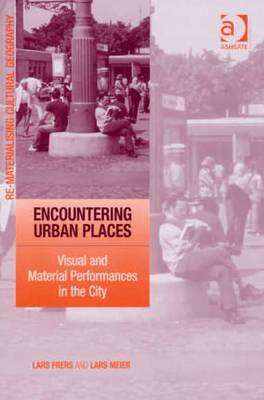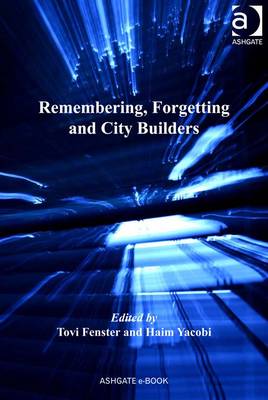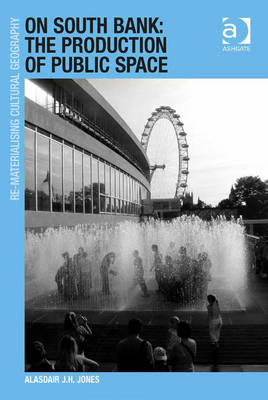Re-materialising Cultural Geography
7 total works
Creative strategies have been central to global social movements. From the theatrics of the 1999 Seattle protests, to the rebel clowns at the 2005 G8 summit in Gleneagles and the antics of the Yes Men, the crossovers between art and politics have increasingly become more visible and prolific. This book explores an innovative form of creative and communicative politics: the `performative encounter', as a strategy for facilitating new ways of being, relating and making worlds. Unlike existing scholarship that frames such encounters in artistic or cultural terms, this book analyzes performative encounters through an organizational lens to accentuate their social-political potential, engaging a wealth of material from autonomist philosophy, political science, performance studies, geography and social movement texts.
Intertwining conceptual and ethnographic research, it uniquely maps out one narrative of the encounter, tracing a line through the twentieth century from the Berlin Dadaists, to the Situationist International, to several contemporary German collectives and campaigns, showing how performative encounters intervene in global and local issues such as the privatization of public space and resources, human mobility and the corporatization of education.
Encountering Urban Places
The aesthetics of urban life offer a curious quality, one that is both highly visible and hidden, both openly influencing and subtly imprinting. These aesthetics participate in the production of places; to the way they are built, to their resisting materiality, to their image in people's minds, to advertising and to the way people respond to the place. Exploring the encounter with the aesthetics, images and material design of urban life, this book offers analytic insights into contemporary cities. It shows how photography, maps and videos play a crucial role in bringing aesthetic dimensions into urban studies. This transdisciplinary approach draws on the full spectrum of the visual representation to tie the encounter with the realm of the visual directly and explicitly into the exploration of urban space.
Remembering, Forgetting and City Builders
Remembering, Forgetting and City Builders critically explores how urban spaces are designed, planned and experienced in relation to the politics of collective and personal memory construction. Bringing together case studies from North America, South Asia, Eastern Europe and the Middle East, the book analyzes how contested national, ethnic and cultural sentiments clash in planning and experiencing urban spaces. Going beyond the claim that such situations exist in many parts of the world because communities construct their 'past memories' within their current daily life and future aspirations, the book explores how the very acts of planning and urban design are rooted in the existing structures of hegemonic power.
With contributors from the fields of architecture, geography, planning, anthropology and sociology, urban studies and cultural studies, the book provides a rich, interdisciplinary view into the conflicts over memory and belonging which are spatially expressed and mediated through the official planning apparatus.
Family photography, a ubiquitous domestic tradition in the developed world, is now more popular than ever thanks to the development of digital photography. Once uploaded to PCs and other gadgets, photographs may be stored, deleted, put in albums, sent to relatives and friends, retouched, or put on display. Moreover, in recent years family photographs are more frequently appearing in public media: on posters, in newspapers and on the Internet, particularly in the wake of disasters like 9/11, and in cases of missing children.
Here, case study material drawn from the UK offers a deeper understanding of both domestic family photographs and their public display. Recent work in material culture studies, geography, and anthropology is used to approach photographs as objects embedded in social practices, which produce specific social positions, relations and effects. Also explored are the complex economies of gifting and exchange amongst families, and the rich geographies of domestic and public spaces into which family photography offers an insight.
This book proposes that we can learn from Tokyo about the instrinsic importance of in-between realms to an international culture: the sanctuaries. It argues that certain urban societies are more robust than others because they offer socio-spatial capacities that enable the development of skills for coping with modern forms of living. It studies places that may open the way to an international culture, namely market places, venues for performing arts and religious sites, which – with particular reference to the Durkheimian tradition – are considered here in their quality as sanctuaries. From its empirical analysis of such sanctuaries in Tokyo, this book develops a more general theory about mega-cities, urban sociability and identity.
This book works with two contrasting imaginings of 1960s London: the one of the excess and comic vacuousness of Swinging London, the other of the radical and experimental cultural politics generated by the city's counterculture. The connections between these two scenes are mapped looking firstly at the spectacular events that shaped post-war London, then at the modernist physical and social reconstruction of the city alongside artistic experiments such as Pop and Op Art. Making extensive use of London's underground press the book then explores the replacement of this seemingly materialistic image with the counterculture of underground London from the mid-1960s. Swinging City develops the argument that these disparate threads cohere around a shared cosmology associated with a new understanding of nature which differently positioned humanity and technology. The book tracks a moment in the historical geography of London during which the city asserts itself as a post-imperial global city. Swinging London it argues, emerged as the product of this recapitalisation, by absorbing avant-garde developments from the provinces and a range of transnational, mainly transatlantic, influences.
On South Bank: The Production of Public Space
by Dr. Alasdair John Howard Jones
Tensions over the production of urban public space came to the fore in summer 2013 with mass protests in Turkey sparked by a plan to redevelop Taksim Gezi Park, Istanbul. In London, concomitant proposals to refurbish an area of the `South Bank' historically used by skateboarders were similarly met by staunch opposition.
Through an in-depth ethnographic examination of London's South Bank, this book explores multiple dimensions of the production of urban public space. Drawing on user accounts of the significance of public space, as well as observations of how the South Bank is `practised' on a daily basis, it argues that public space is valued not only for its essential material characteristics but also for the productive potential that these characteristics, if properly managed, afford on a daily basis.
At a time when policy-makers, urban planners and law enforcement authorities simultaneously grapple with pressures to deal with social 'problems' (such as street drinking, vandalism, and skateboarding) and accusations that new modes of urban planning and civic management infringe upon civil liberties and dilute the publicity of `public' space, this book offers an insightful account of the daily exigencies of public spaces. In so doing, it questions the utility of the public/private binary for our understanding both of common urban space and of different sets of social practices, and points towards the need to be attentive to productive processes in how we understand and experience urban open space as public.






